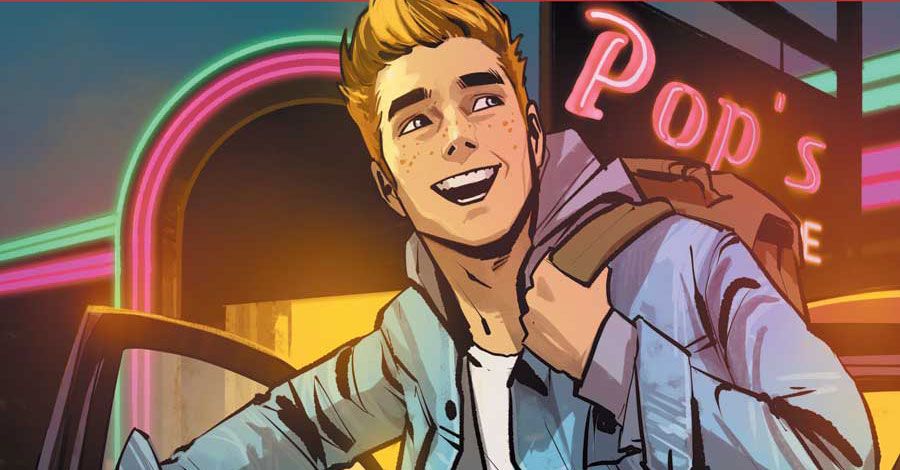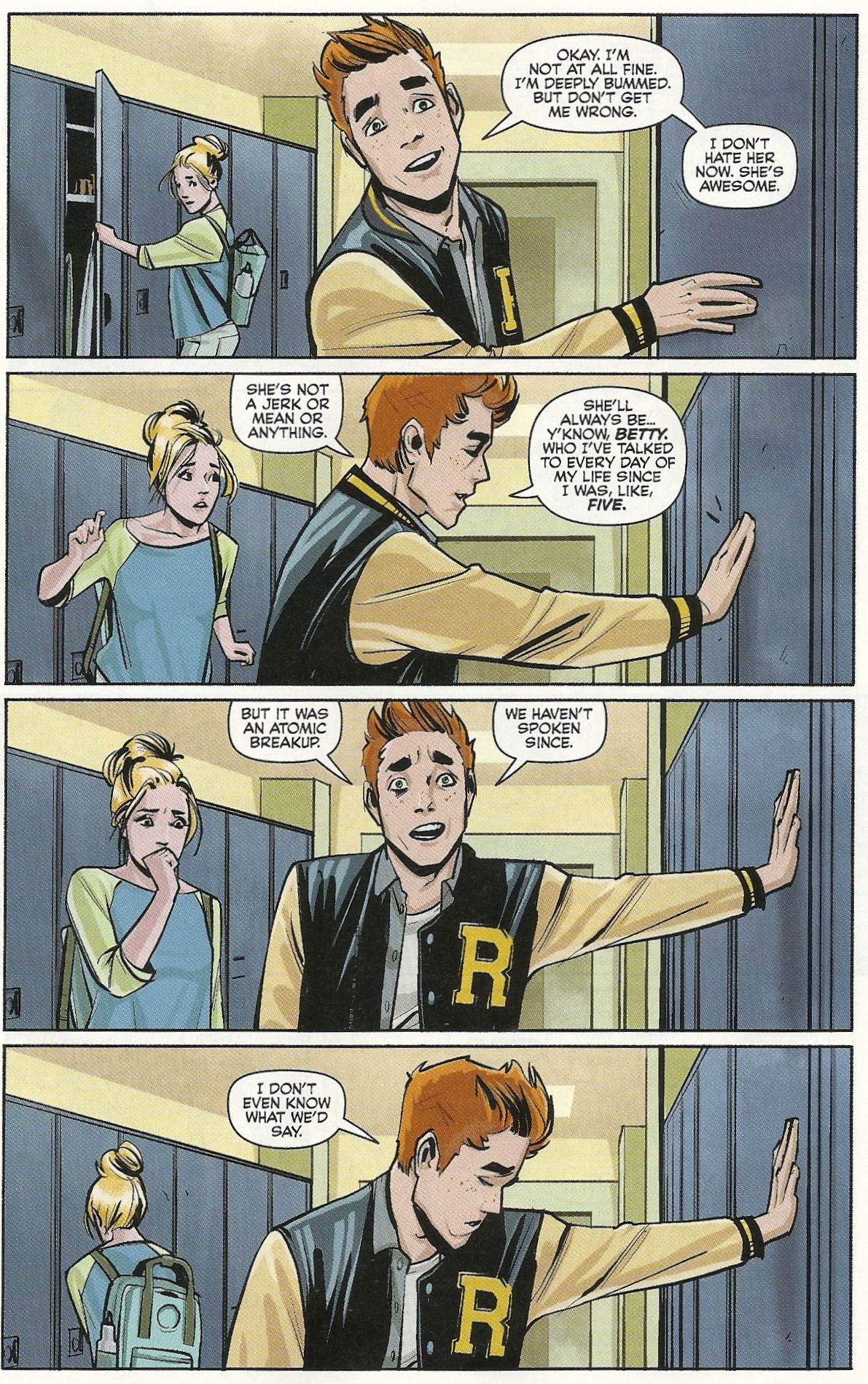In 22 pages, Mark Waid and Fiona Staples completely reinvent Archie comics, coming up with a take on the character that should appeal to a whole new and extremely wide audience.
That's some stunt.
For quite a while now, publisher Archie Comics has been engaged in an ongoing campaign of stunt comics, all seemingly calculated to secure the most mainstream media coverage. They introduced characters that made the notoriously conservative comics more representatively diverse. They had a same-sex marriage. They married Archie to Betty...and they married Archie to Veronica (In alternate future timelines, of course). They killed Archie. They had the gang from Riverdale meet Kiss, President Barack Obama and then-Governor Sarah Palin, and even a Predator. They even launched an honest-to-God, mature-readers horror comic in which Archie and friends battle to survive a zombie apocalypse.
But relaunching Archie with a new #1, a new creative team and a new direction has got to be their best stunt yet. Certainly, the move boasts some of the same calculation that went into those mentioned above (many of which did produce some good comics, no matter how cynically you want to view the decisions behind them). Hiring Mark Waid, one of the more popular and maybe the most reliable of superhero writers, and Fiona Staples, an immensely talented artist who achieved superstardom via creator-owned Image series Saga, is every bit as attention-getting as setting the issue counter back down to #1, or having an ungodly 21 (Twenty-one!) covers, or divorcing the book from its long-time house style.
It works though, and it works for the most simple of reasons: The new Archie #1 isn't just new and it isn't just different, it's also very good.
Honestly, Waid's script for Archie #1 is as good as anything he's written anywhere else before, and Staples' artwork is as good as anything she's drawn anywhere else before.
What is probably most striking, however, is how far they move from the comic's default mode of gag comics with short, snippet-like scenes that may or may not add up to a cohesive whole. Rather, this is a done-in-one teen dramedy comic, one that reads as a complete story...but also continues into the next issue.
"Hi," Archie greets the reader on the first page, a splash showing off Staples' infinitely more realistic art (and Andre Szymanowicz and Jen Vaughn's more naturalistic coloring). "My name is Archie Andrews. Welcome to Riverdale."
For the remainder of the issue, Archie talks directly to the reader, taking us with him and showing us around almost as if we were the new kids at Riverdale High School.
The book is broken into chapters, but they flow into one another naturally, and the story would lose nothing without the chapter labels. Archie has just broken up with Betty Cooper, who has been his girlfriend since kindergarten, over something he and she will only refer to as "The Lipstick Incident," much to the frustration of the rest of the student body.
While Kevin and and a pair of girls–sorry, I'm less than expert on the Riverdale High student body–conspire to get Archie and Betty back together via naming them homecoming king and queen, Archie's best friend Jughead has his back, defending him from the busybodies' master plan and helping him land a swell gig that shows off his guitar skills.
While we don't learn exactly what went on between Archie and Betty, it's clear they both have feelings for one another...
...and that things will get much more dramatic next issue. Reggie Mantle is moving in on the suddenly single Betty, and apparently Lodge Industries and its millionaire owners are moving into town, and word on the street is that they have a daughter.
At the conclusion of the story, the writer introduces the very first appearance of Archie, in 1941's Pep Comics #22. In his four-paragraph prose intro to the Bob Montana/Vic Bloom story, Waid points out that all of the essential elements that would be expanded over the next 70+ years in "the approximately eight trillion Archie stories told since" are present in that simple six-page story.
The same could be said for Waid's Archie #1; it's everything essential to the Archie story, even if it looks as different from the Archie of a few months ago as that comic looked from the Archie comics of the 1940s.
It's difficult to overstate Staples' contribution, and it seems like a shame that her cover is competing with 20 other covers, as one actually has to crack it open and start reading to see what a 180-degree turn it is from the coloring-book simple artwork of the "old" Archie.
He's still a freckled redhead, but he suddenly looks stylish and, well, handsome. Finally, one can see why exactly Betty and Veronica would be competing over this kid (maybe that takes an element of the humor out of the strip, but if it does, they have been mining that element for longer than most of the people who will read this comic have been alive).
The other characters also look less like cartoon characters and more like people. Gone are Jughead and Mr. Weatherbee's inches-long, narrow noses (though Jughead still has a somewhat pointy nose...he's all points and angles, a nice bit of visual tension with his voracious appetite. But don't worry; he still has his hat).
As in Afterlife With Archie, they all look like real people, wearing real clothes, in a real place...but here the colors are bright and poppy and, well, real. If you're reading Saga, and you should be as long as you're old enough to be doing so, then you'll see the same great artwork here, just a lot more of it, and with more examples of Staples' superb visual acting through characters.
I mentioned the book's potential appeal to a broad audience, and as a high-quality, all-ages comic book featuring one of the most recognizable, non-superhero characters in all of comics, it's a wide audience indeed: Basically anyone who likes comic books...or might start liking them after they give this a read.
So how does the publisher top this stunt? They don't need to; they just have to keep it up.



